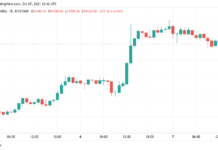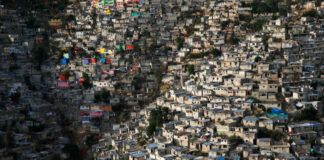The Covid-19 scenario should not be repeated, warned the World Health Organization (WHO). To stem the monkeypox epidemic that is spreading in Europe and North America, several states have already announced that they would resort to vaccination. But in African countries where the disease has been endemic for several decades, smallpox doses are lacking. “We must avoid having two different responses, one for Western countries that do not experience significant transmissions and another for Africa”, alerted, Thursday, June 2, Matshidiso Moeti, director of the WHO regional office .
The inequity would be all the more glaring as the disease, which is characterized by significant rashes, has been present for a long time on the African continent. In 2022 alone, almost 1,400 people are suspected of having contracted it, almost double the number of cases recorded outside Africa since the beginning of May. Sixty-six deaths have been reported in the first five months of 2022. The territory paying the heaviest price is undoubtedly the Democratic Republic of Congo (DRC), where 1,284 people have been infected with the virus and 58 have died. in five months. A balance sheet undoubtedly lower than the reality, most of the epidemic centers being in territories difficult to access.
First identified in humans in 1970 in this Central African country five times the size of France, monkeypox has only affected a few people sporadically for years. Circulating mainly in rural areas and tropical forests, it has spread quietly over the years, to the point of now being considered endemic in eleven African states, such as Nigeria, the Central African Republic, the of the Congo, Cameroon or Sierra Leone.
In 2017, a sudden outbreak led to an increase in infections in five countries, with more than 2,800 cases reported. Since then, this large-scale epidemic has continued: in total, in five years, nearly 23,500 suspected cases have been reported in seven countries in the region, including 589 deaths, according to the WHO. Why such peaks? The causes are not yet precisely known but, according to the WHO, they could “be due to deforestation and the encroachment of populations on the habitats of animal hosts of monkeypox”. Experts also suggest the decline in herd immunity to orthopoxviruses, the family to which the monkeypox virus belongs, since the end of vaccination against smallpox, which was eradicated in 1980.
A rapid and unexpected evolution
To support this hypothesis, Australian researchers pointed out, in an April 2021 article in the journal Emerging Infectious Disease, that in 2016, the year before the epidemic began in Nigeria, only 10% of the population was vaccinated. Unvaccinated people accounted for about 80-96% of monkeypox cases, according to a literature review analyzing 66 studies. Another hypothesis is that of the genetic evolution of the virus. In an American study conducted in the DRC – published in February 2014 – researchers succeeded in revealing a loss of genes in many samples, which seems to be correlated with human-to-human transmission. A trend that seems to be confirmed by the recent epidemic outside Europe.
“For a genome of a DNA virus such as that of monkeypox, we expect one or two mutations per year, explains Arnaud Fontanet, medical epidemiologist and director of the global health department of the Institut Pasteur. But in the virus currently circulating outside Africa, there have been 47 mutations in four years. This rapid and unexpected evolution “could either reflect circulation in a new intermediate host, which would probably be a rodent, or testify to human-to-human circulation”, analyzes the researcher.
The virus which has been spreading since the beginning of May first in Europe and then in the rest of the world is close to the “West Africa” strain, present in Nigeria and whose lethality varies according to studies between 1 and 3%. Since the beginning of the year, 46 cases have been reported in this country. The disease has officially claimed no casualties, but it is circulating: present mainly in the South, it has been reported, since 2020, in the Center, East and North regions, in particular the urban areas of the plateau of Abuja, the capital.
In the DRC, where the dominant strain known as “Congo Basin” has an estimated case fatality rate of between 5 and 10%, infected people remain for the moment concentrated in forest and rural areas. It is “a reportable disease, as routine as malaria and measles,” said Steve Ahuka Mundeke, head of the virology department at the National Institute for Biomedical Research in Kinshasa, DRC. “Deaths, he adds, are more related to late treatment and bacterial superinfections. Many patients are young children, who are more vulnerable to the disease. »
Rodents, possible reservoirs of the virus
Once again, “it had to affect rich countries for the international community to react,” laments Emmanuel Nakoune, scientific director of the Pasteur Institute in Bangui. For more than twenty years, this specialist in haemorrhagic fevers, emerging viruses and zoonoses has been tracking monkeypox in the forests of the Central African Republic. His laboratory registers between twenty and thirty cases each year in the country. A much less spectacular cohort than in the Democratic Republic of the Congo, but which has made the Bangui laboratory one of the outposts for monitoring the disease, particularly in the south-west of the country.
In conjunction with the Pasteur Institute in Paris, Professor Nakoune’s teams have been carrying out in-depth surveys of patients and their relatives since 2018 as part of the Afripox project. “The data we collected shows that 50% of people born after 1980 who were tested in the entourage of the sick had been in contact with the virus. Children between the ages of 10 and 15 have the highest antibody levels. At this age, they indeed begin to hunt small rodents and squirrels, which are strongly suspected of being the reservoirs of the virus. »
Since September 2021, the Pasteur Institute in Bangui has been authorized to treat patients with Tecovirimat, an antiviral designed for smallpox. “In all, fourteen people were treated with this treatment. They are well. The results are being analyzed with a team from Oxford, “explains Emmanuel Nakoune, still claiming to have” 124 boxes of twenty-four capsules “. The main smallpox vaccine, the only one with marketing authorizations against monkeypox, is also being tested in the DRC. But routinely, patients do not have access to these treatments. In Europe and the United States, on the other hand, vaccinations after exposure to the virus have already begun. “We must take advantage of this epidemic to alert that ten African countries need vaccines and treatments for their caregivers and their population”, concludes Arnaud Fontanet.














